![[JOHN STEWART TURNER - 75.7 K]](gifs/TURNERport.jpg)
![[JOHN STEWART TURNER - 75.7 K]](gifs/TURNERport.jpg)
|
John Stewart Turner came to Melbourne from Cambridge to take up the Chair of Botany and Plant Physiology at the University of Melbourne School of Botany in 1938. He was then aged 29 and one of the youngest Professors to be appointed to a chair at the University. He occupied the position for thirty-five years until his retirement in 1973. In 1974 Turner was made an Officer of the Order of the British Empire for his services to Botany, but many believed that the award should have been made for Turner's great works in the fields of conservation and ecology and for his service to the people of Victoria towards the preservation of their natural heritage. The records of John Stewart Turner are currently held by the University of Melbourne Archives. ASAP received funding from the Feildman Foundation to undertake a detailed Inventory level description of these records. The project is now close to completion. ASAP archivist Andrea Barnes completed a detailed inventory listing and related Accession, Series and Provenance information using the ADS database.
 From all this information collected in the ADS, a printed Guide and an electronic Guide are currently being produced. We use reports in Microsoft Access to format the data and then output it as a rich-text format (rtf) file. One could also use the mail-merge function in Microsoft Word to take the data directly from the ADS tables and format the output in Word rather than Access. This is not a plug for Microsoft, but we do make use of the inter-connectable nature of their various applications.
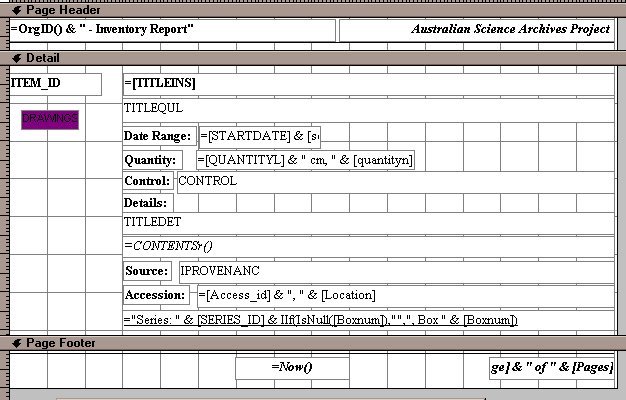 Once the rtf file has been created, it is then opened in Word and editing begins. We have developed a format for the style of our Guides, and use Macros and Global Replace to facilitate the editing of the data into the appropriate format for the printed Guide. Photographs and other records are then scanned in and placed within the Guide to create a more visual and interesting publication. For our printed Guides we presently use Word instead of Access because Access Reports don't allow the design and layout capabilities that Word does. One could also output the data to a desktop publishing application such as Adobe Pagemaker which we also use frequently for promotional material.
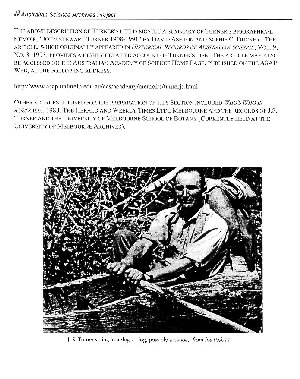 For the electronic Guide, the data in the ADS is currently output from the ADS using macros and modules (as described in the previous page about CSIRAC) to create the HTML files. We also use an application called HotDog Pro to edit these HTML files, to add images and extra links to other related web pages. Something else that we have recently been developing, and the Turner project has been a guinea pig for this, has been the Indexing function of the ADS. This differs from the ADS Keyterms function. Large projects usually have a finite list of keyterms to enable more user friendly, speedy searching capabilities, and data profiling within the database. For smaller projects, we have been using the Indexing function to produce "back of book" indexes for printed Guides to records.
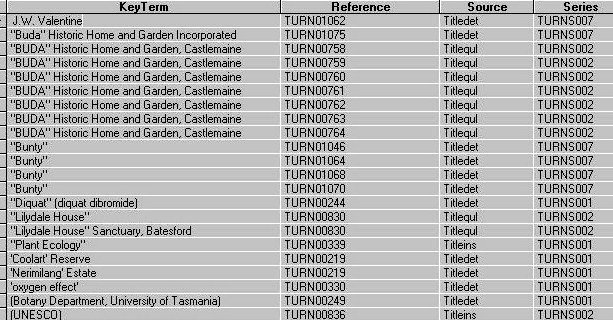 While detailed inventory listing is occurring, or after detailed inventory listing has occurred, relevant subjects, names of individuals, organisations, or terms can be copied and pasted into the Indexing Terms table. There are two main fields used - one on the left for the term as it is found in the inventory whatever the variations (because we use natural text in our descriptions), and one on the right for how that term will appear in the finished index. In this way we can have a "many to one" relationship - especially where names have been entered differently, or where file titles include misspellings or discrepancies. Of course this area is still under development. We are also looking at the many possibilities with related terms, and sub-terms. So, once the Indexing Terms table has been completed, an index can be generated by the ADS. What this means is that another table is created that links every occurrence of the keyterms in the first column by means of the Inventory Id Number (which is the unique identifier), with the index term in the second column. Once this table has been created, there are many uses for it. For the Turner printed guide, a report has been developed in Access that will take each index term and then show each Series and Unit number that relates to it as a long list underneath. Once again, this report is output as an RTF file and edited in Microsoft Word with a series of Macros to edit the text and produce the finished index. Indexing is proving to be quite an art form - we have been in contact with the Australian Indexers Society in Melbourne for advice, and are using a variety of projects at present to develop some protocols for how we index records. Although much of the way we index records can be consistent across projects, the diversity of our projects requires that a certain amount of individual consideration be given to each one. As with Turner, botanical terminology has been included where relevant, but in many projects, a whole other set of keyterms may be identified. It's always difficult to know how much to include, and also what not to include in the index. A term that has too many reference points is not much help to the user. Louise Anemaat (Mitchell Library) discusses in her paper about the Banks Imaging Project, the difficulties of indexing - and there are certainly many issues to consider. In fact one could probably keep indexing indefinitely, but eventually, time, money or both run out. Often the level of detail in the index will be determined by the amount of funds we have for that project, or the perceived importance of the records. It is the same for the level of archival description in the Accession, Series, Provenance and Inventory tables in the ADS. Because the ADS can generate the index as and when required, we can analyse the index at certain stages of the project - see how many reference points there are for each term, and make decisions about whether we include a term, whether we need to be more specific, or more general in the way we are indexing. We need to consider how the index will be used, and what users might be looking for.
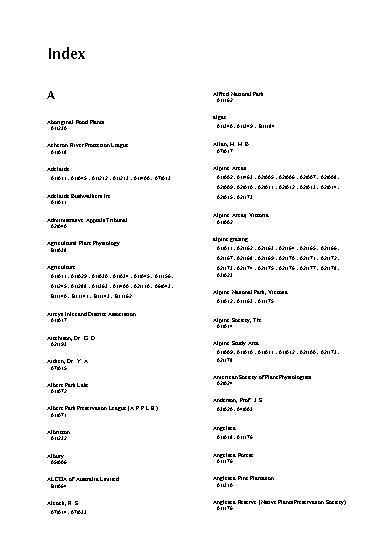 Before the ADS indexing function was developed, our older Guides had "back of book" indexes created manually in word processing applications. Needless to say, the ADS has vastly improved the process of creating an index. Indexing in this way, has also made us more aware of how we describe records in the Inventory. Because we use natural language to describe the records, and because our projects cover such a variety of areas - not just in science, technology and medicine, we need the flexibility of the ADS, but we also develop protocols for the ways we describe things. Each new project gives us the opportunity to take this development a little further ahead and provides input into the next project.
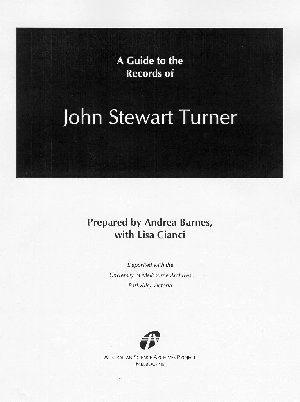
For the Turner project, The finished index will be used as a "back of book" index for the printed guide, and also for the electronic guide on ASAP Web, so the user can browse relevant terms which will link directly to the inventory listing and where relevant, to Bright SPARCS on ASAPWeb.
|
|
| |
|
Search |
Site Index |
ASAPWeb
Top of page | ASAP Articles Home
Published by the Australian Science Archives Project on ASAPWeb,
August 1997.
|